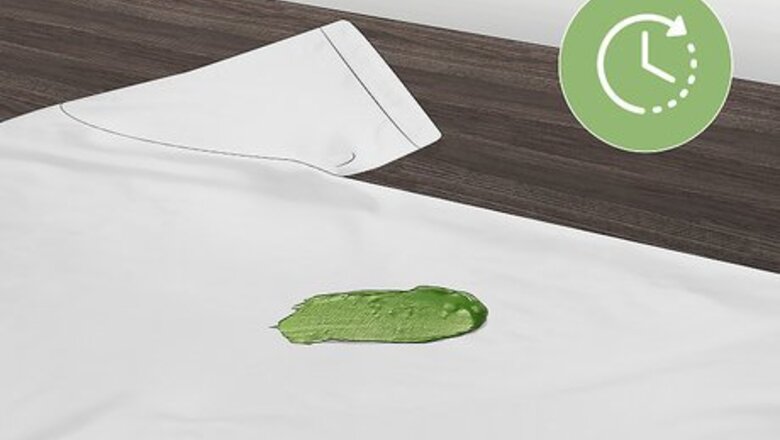
views
Removing the Playdough
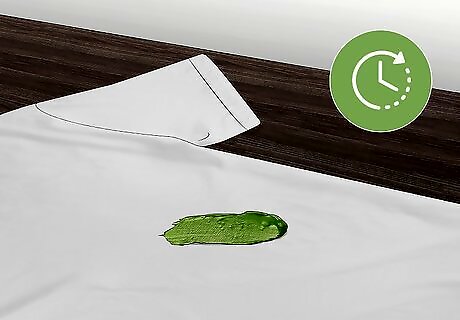
Wait for the playdough to harden so it’s easier to brush off. Let the playdough dry completely before you try removing it. As tempting as it may be to scrub the playdough away when you first notice it, you might end up spreading the stain into the fabric and make it worse. Put the article of clothing in the freezer if you want the playdough to harden more quickly. Check on the fabric after 20-30 minutes to see how much the playdough has hardened. Take the item out when the playdough is no longer pliable.
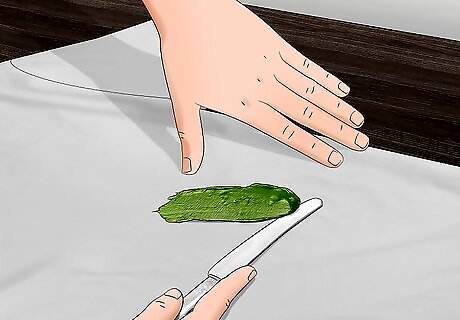
Scrape the playdough in a consistent direction using a spoon or butter knife. Take a dull utensil, like a butter knife or spoon, and brush off the hardened playdough. This will help you remove it in larger pieces, which will make it easier to treat the stained area. Try wedging the utensil under each piece so you can try prying off the hardened playdough. Make sure that the scraping tool you use is dull, so you don’t damage the fabric during the playdough removal process.
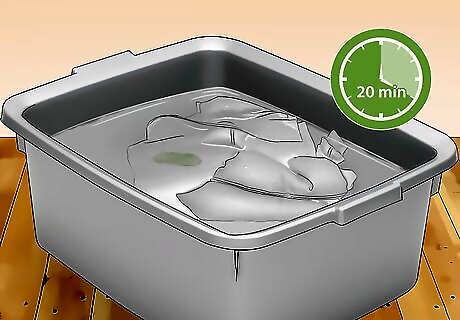
Soak the item in warm water for 20 minutes to loosen leftover playdough. Soak the piece of clothing in water to loosen any stubborn scraps of playdough. Try to let the article sit for at least 20 minutes, so the extra playdough has plenty of time to come loose. Aim to have the water be between 92 °F (33 °C) and 100 °F (38 °C).
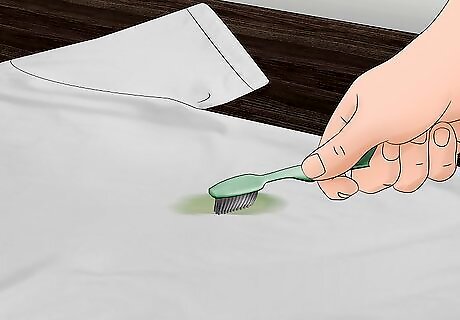
Brush away any lingering playdough residue with a toothbrush. Take a toothbrush with gentle bristles and coax away any leftover specks of playdough from the clothing. This will be much easier to do after the shirt has soaked. Use short, gentle motions when brushing off the playdough. Double check the bristle hardness when purchasing a brush. Soft or extra soft is a good fit for the job.
Treating the Stained Area
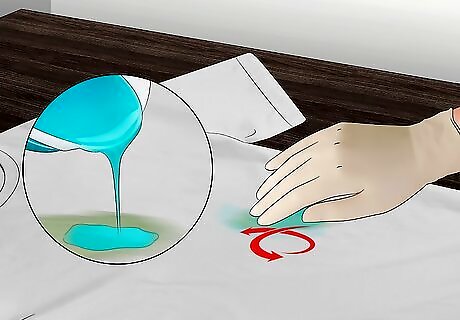
Rub liquid laundry detergent onto the spot and let it soak for 5 minutes. Knead a coin-sized amount of laundry detergent into the stained area with your fingers. Since laundry detergent irritates your skin, be sure to wear water-resistant gloves when handling the cleaning agent.
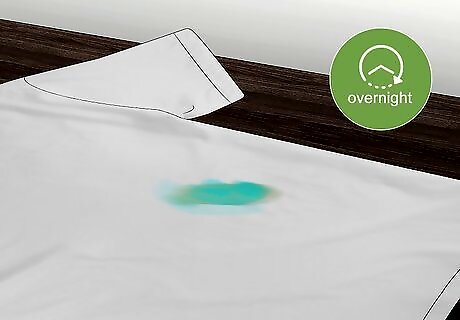
Cover the stained area with dish soap and let it soak overnight, alternatively. Coat the playdough stained area in a thin layer of dish soap if you prefer not to use laundry detergent. Since dish soap isn’t as concentrated, leave it alone overnight so it can soak into the fabric thoroughly. Drench the stained spot in a small container of liquid dish detergent for a more intense cleaning job. If you don’t want to wait all night for the material to soak, consider drenching the stained area in a small basin of dishwashing detergent for 15 minutes. Once the fabric has soaked, rinse it out with hot (not boiling) water.
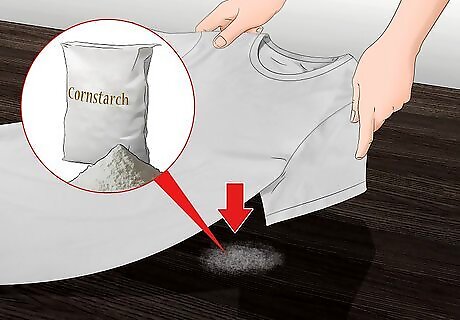
Place delicate items on a small pile of cornstarch for at least 1 hour. Clothing articles that should only be dry-cleaned, like wool, rayon, silk, and linen, should be treated with a less invasive option. Make a pile of cornstarch on a flat area and set the stained area on top of it. The circumference of the pile should be the same size as the playdough stain. Leave the fabric on the cornstarch for at least an hour before picking it up and shaking off any loose powder. If you don’t have any cornstarch on hand, baby powder can work in a pinch.
Washing the Clothing Item
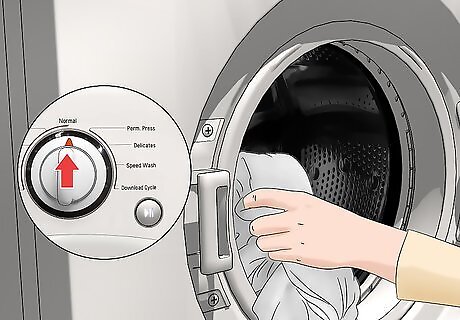
Place the clothing item into the washing machine and start a normal cycle. Toss the playdough-stained article of clothing into your washer and run a normal load. Double check the clothing’s material to make sure that it can be washed in a machine. Cotton and synthetic materials like polyester can usually be machined washed, but other fabrics like rayon and silk may require more particular washing methods. Depending on the severity of the stain, you might want to wash the garment by itself. If the stain isn’t that bad, add it to your normal load of wash.
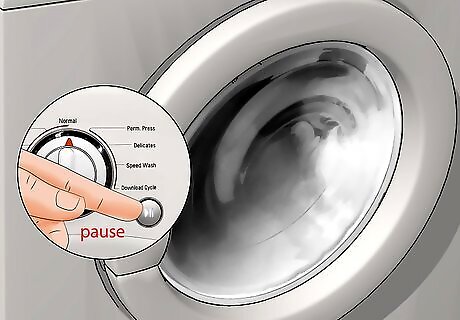
Pause the cycle before the rinse cycle starts and let the item soak for 15 minutes. Keep an eye on the machine as it runs through the normal cycle. Then, pause the load right before the rinse cycle begins. Let the fabric soak for at least 15 minutes before you complete the cycle.
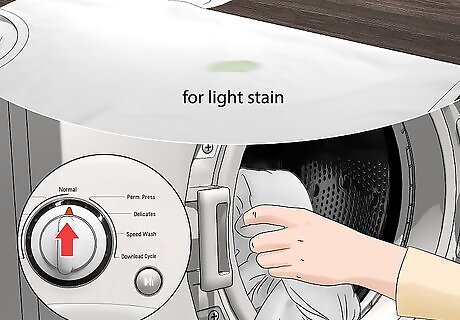
Skip the additional soaking if the stain doesn’t look severe. Place the piece of clothing in a normal load of wash if the treatment process has removed the worst of the stain. Let the piece of clothing wash as it normally would, and don’t worry about having to pause or time the cycle. Depending on your machine, you might have a pre-soak option. If so, you don’t have to worry about pausing the machine to allow for a soaking period.
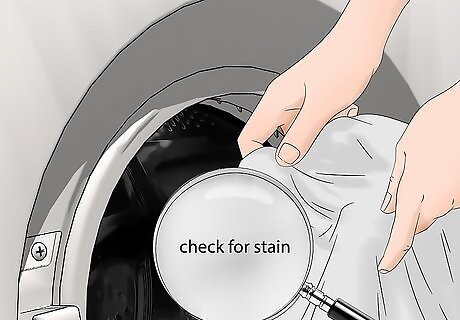
Continue the cycle and check the stain once the cycle ends. Resume the load of wash and let your stained item go through the rinse cycle. Once the cycle ends, examine the item for stains. You can repeat the process as needed until the stain is removed. Don’t machine dry until stain is gone, or else it may become permanent in the fabric.




















Comments
0 comment